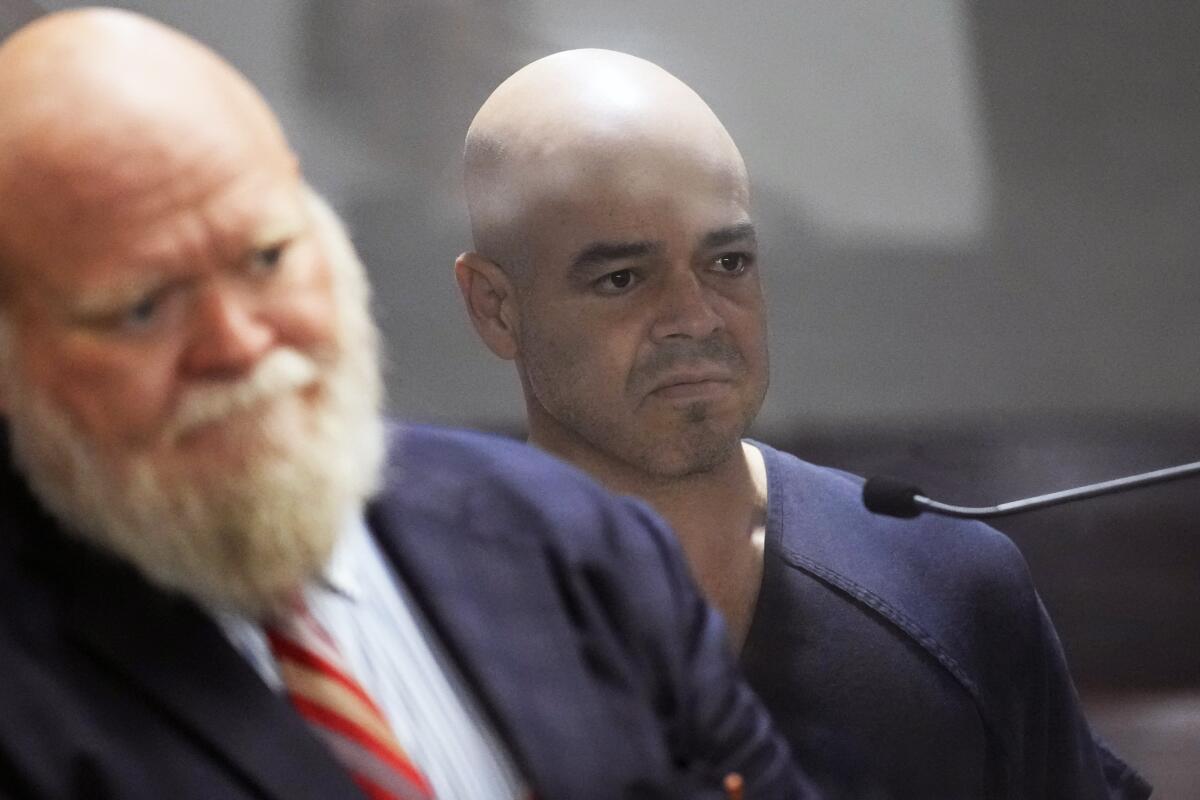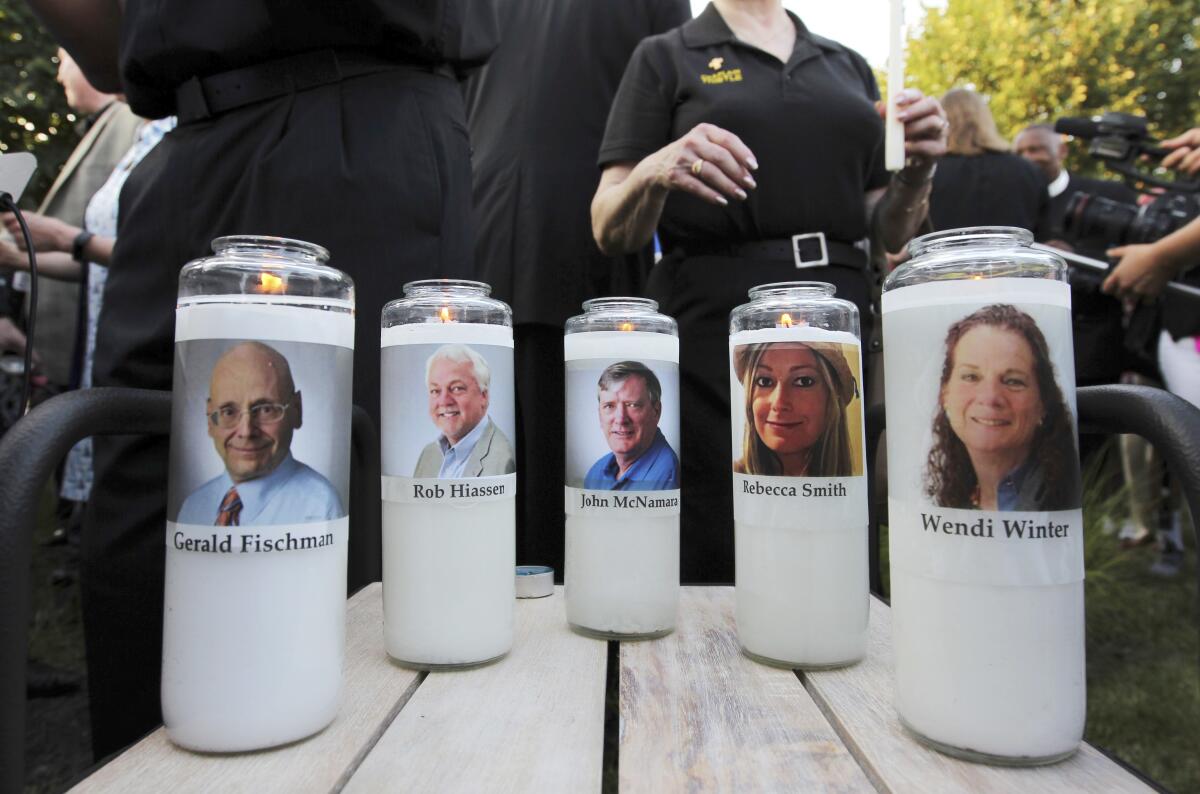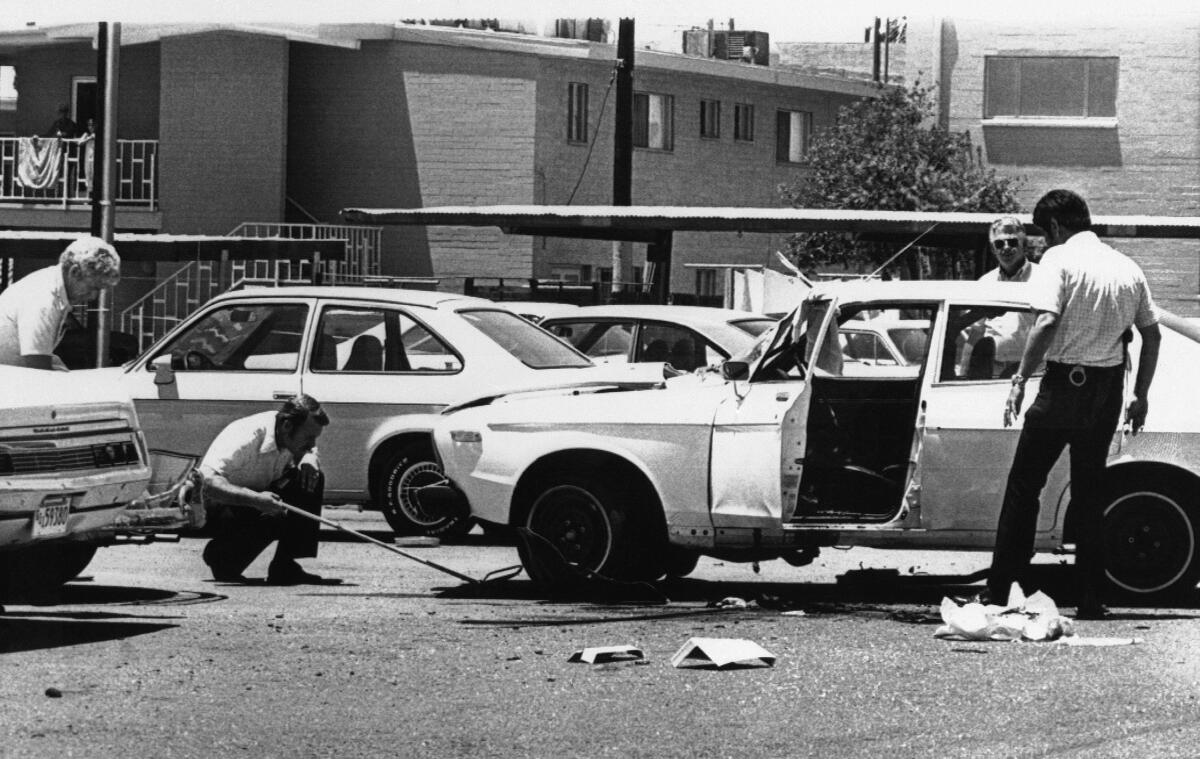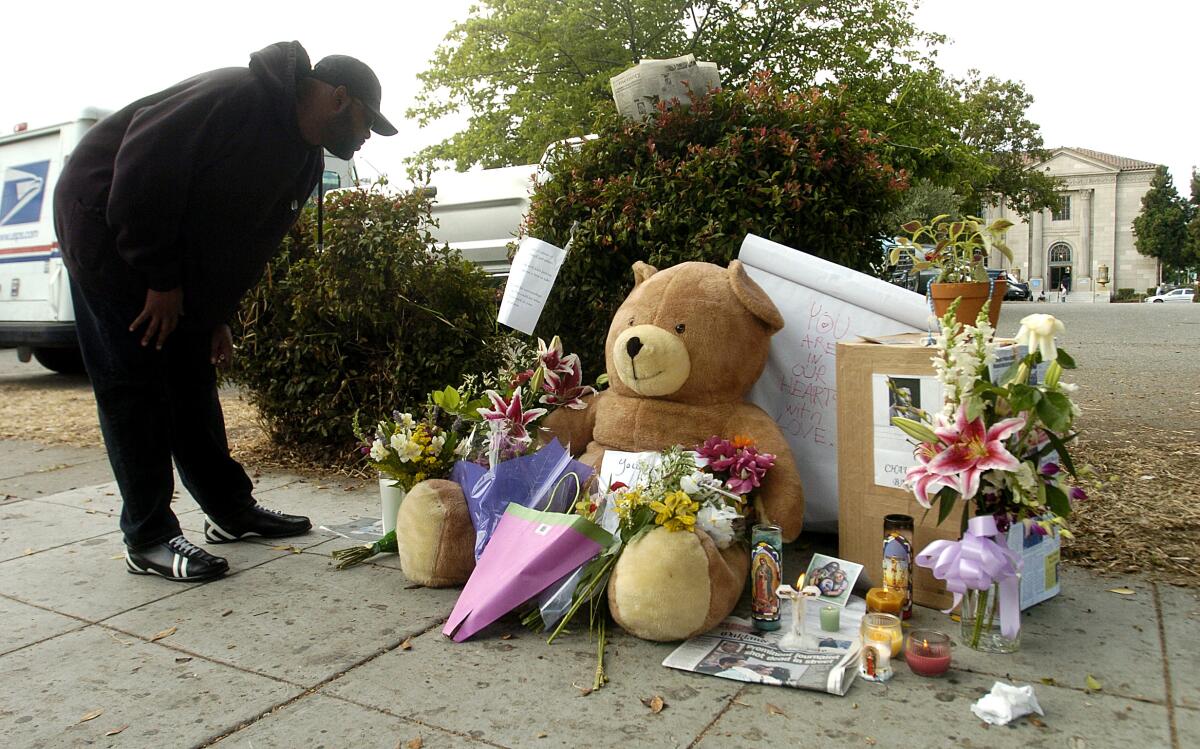Slaying of Las Vegas reporter is a shocking example of threats facing U.S. journalists

Jeff German’s articles exposed alleged bullying and favoritism within Clark County’s government, and as he had expected, they had an immediate impact.
The work of the Las Vegas Review-Journal investigative reporter was widely viewed as contributing to the June election loss of Robert Telles, whose office oversaw the estates of people who died without estate plans. But that sort of work was nothing extraordinary for German, who for decades had taken on police, judges, casino executives and mob bosses.
That’s why German’s murder over the Labor Day weekend, which police say was committed by the slight, unimposing man German had been reporting on, resonated profoundly with the writer’s colleagues in Las Vegas and around the country. A journalist had been murdered, apparently for speaking truth to power, and it seemed to many in the news business to epitomize an increasingly perilous environment for their work.

German, 69, loved to regale friends with the story of how a boxer he profiled once punched him squarely in the nose. He figured that meant he’d already had his requisite brush with violence.
“He was not afraid or fearful at all,” said Rhonda Prast, assistant managing editor for investigations and projects at the Review-Journal.
Murders of journalists connected to their work remain a rarity in the United States, especially compared with countries like Mexico, where 13 reporters have been killed since the start of the year. German’s stabbing death outside his home last week would make him the 12th journalist slain in America in the last 30 years in connection with their work, according to the Committee to Protect Journalists.
Because of the 1st Amendment and rule of law, journalists here enjoy far more protections than those abroad, where reporters are often killed with impunity.
At the Review-Journal, reporters kept at it. After German’s death, his colleagues staked out Telles’ home and may have been integral to his arrest, having identified a red SUV that matched the description of the getaway car.
Investigators said that items worn by the suspected killer of reporter Jeff German were recovered from the home of Clark County Public Administrator Robert Telles, who is charged with murder. They also said they found Telles’ DNA at the scene of the fatal stabbing.
Despite greater protections in the U.S., a variety of journalism trade groups report a significant recent increase in threats and violence directed at reporters. Newsrooms have stepped up their security markedly, with guards and metal detectors, while many more reporters and photographers now receive training in how to protect themselves during protests, school board meetings, and even once seemingly innocuous sidewalk interviews.
“What I hear every day around the country is a significant increase in threats and in a sense of permission that people feel to attack journalists,” said Bruce Shapiro, executive director of the DART Center for Journalism & Trauma at Columbia University. “We’re seeing far more threats and far more actual violence directed at local journalists, in particular.”
The U.S. Press Freedom Tracker found assaults on journalists peaked in 2020 with 454. But attacks have continued.
Vandals this spring targeted the homes of the news director and a reporter for New Hampshire Public Radio, painting the threat “Just the beginning!” on one of the houses. In February, a security guard at a Bakersfield health clinic accosted a TV news crew, trying to wrestle their gear away from them, though they were standing on public property.
In July, a television cameraman was chased and punched while covering the opening of a cooling station in Portland, Ore. Last November, a security guard for a KRON-TV reporter was killed in Oakland while the reporter was covering the burglary of a store.
Investigative journalists have long met with obstreperous and sometimes threatening subjects. But now writers and photographers tell of seemingly mundane encounters going sour.
As in the case of German, who was abused by Telles via Twitter before the stabbing, many reporters find their email inboxes and social media threads brimming with profanity, menacing asides and even other “hair-raising abuse, for just trying to do a job that keeps getting harder,” said the DART Center’s Shapiro.
The most violent attack on journalists on American soil in recent memory came in 2018, when a man armed with a shotgun and smoke grenades stormed the newsroom of the Capital Gazette in Annapolis, Md., killing five staff members and injuring two others.

The killer, Jarrod W. Ramos, apparently thought the newspaper and the court system were out to get him, though the Gazette had only reported, accurately, about Ramos’ guilty plea in a harassment case.
Ramos had filed a lawsuit and waged a social media campaign against the newspaper’s journalists, both to no avail, since they had gotten the story right. He was sentenced to five consecutive life terms without the possibility of parole.
“I feel like the importance of journalism is to hold the truth up to society. To hold people accountable,” said HH Hiaasen, whose father, Rob, was killed in the Capital Gazette shooting. “It’s such important work and we need it now more than ever. But the system has to be set up for people to be able to honestly and truthfully do this work without being threatened.”
In 2017, U.S. Rep. Greg Gianforte, a Republican running for reelection in Montana, body-slammed a reporter from the Guardian at a public event. Convicted of a misdemeanor, Gianforte paid a $385 fine, completed 40 hours of community service and 20 hours of anger management training, wrote an apology letter and donated $50,000 to the Committee to Protect Journalists.
But the most visible critic of the news media in the country, then-President Trump, saw no need for apology. Said Trump: “Any guy who can do a body slam, he is my type!” The president also referred to the media as the “enemy of the people.”
Organizations of professional journalists blamed such rhetoric for emboldening attacks on members of the media.
Martin G. Reynolds, co-executive director of the Robert C. Maynard Institute for Journalism Education, said he began to see a shift in attitudes after “Donald Trump’s really explicit language positioning journalists as enemies of the state.”
“In doing so, he’s really done a lot to increase the level of hostility and vitriol toward journalists in the national discourse,” Reynolds said. “Using terms like ‘fake news,’ it really just implies that there are ill intentions on the part of journalists whose job it really is to inform a democracy and serve cities and communities across the country. It has a real chilling effect.”
Trump’s vilification of journalists has contributed to the threats they face, many experts say. But on social media this week, Trump’s supporters were quick to go on the offensive and accuse the media of bias. “ABC, CBS, NBC, MSNBC avoid mentioning suspect in journalist’s murder is a Democrat,” Fox News tweeted, and numerous MAGA supporters emphasized Telles’ party affiliation.
Diana Fuentes, executive director of the professional training organization Investigative Reporters & Editors, said that German’s death naturally provokes anxiety for some journalists, but that determination to carry on quickly follows.
“What’s happening now is resolve,” she said. “People are resolved that they will not be stopped — that this is not going to stop us and that we will not be intimidated.”
That’s been the response to previous assassinations of reporters.
In 1976, a car bomb killed Arizona Republic reporter Don Bolles, one of the paper’s top investigative journalists. Initially, his colleagues wondered if it was tied to his reporting on Mafia figures.
Soon after, police arrested John Adamson, who testified that he had been hired by a wealthy contractor to kill Bolles for writing articles that were damaging to the business interests of Kemper Marley Sr., a wealthy Arizona rancher and liquor distributor. Marley was never charged in the case.
Fellow reporters who were members of Investigative Reporters & Editors were determined to carry on in Bolles’ name. The result was the Arizona Project, in which a group of reporters and editors from across the country produced nearly two dozen stories.

Bolles’ city editor, Bob Early, said in an interview that violence was much more of an anomaly in those days. Today, he sees a “whole society turning violent” and added that it’s common “for reporters to be targeted by people that they offend or people that think they are offended by them. People have to be very cautious today.”
The pattern recurred in 2007, when Chauncey Bailey, editor of the Oakland Post, was gunned down on a downtown street in broad daylight in an effort to stop his coverage of the finances of a local business named Your Black Muslim Bakery. Three young men associated with the bakery were convicted in the killing.

After Bailey’s death, dozens of reporters and editors gathered in Oakland to finish his work, thus creating the Chauncey Bailey Project, modeled loosely on the Arizona Project.
The Maynard Institute’s Reynolds, who was among the lead editors of the project, said a phrase from that time has always stuck with him: “You might be able to kill the messenger, but you can’t kill the message.”
At the Review-Journal offices, a small shrine has blossomed on German’s vacant desk, with flowers, a football commemorating his fantasy league triumphs, and an empty notepad marked with “RIP Jeff.”
Two investigative stories that the relentless reporter had started will be finished in the next two months, said his editor, Prast. But no one can replace the decades of sources and local knowledge that German took to his death. No one will be able to pump the movers and shakers at a favored haunt, Triple George Grill, quite the way the old pro did it.
Prast had been exchanging notes on the Slack messaging platform with her star reporter Friday morning when he abruptly dropped the conversation. She now realizes that the reason likely was his encounter with whoever killed him.
But German would not leave the world without providing perhaps his final clue to investigators. On his hands, authorities said, they found skin. It has been linked by DNA analysis to Telles, the man accused of killing him, according to authorities.
“This has all been so strange, so unbelievable,” said Prast, who had to stifle tears as she talked about German. “We are all now just intensely dedicated to figuring out what happened here and helping to get justice for Jeff.”
Times staff writer Richard Winton contributed to this report.
More to Read
Sign up for Essential California
The most important California stories and recommendations in your inbox every morning.
You may occasionally receive promotional content from the Los Angeles Times.













